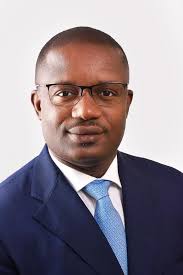
By John Abdulai JINAPOR
Ghana recently welcomed Indian Prime Minister Narendra Modi, marking the first visit in thirty years. This meeting was significant. It reaffirmed the strong relationship between our nations and set the stage for our future together. Both countries, which were leaders in the Non-Aligned Movement, are now working together to improve access to decentralized renewable energy for the Global South.
Equity, inclusivity, and prosperity are key principles that Ghana and India have pursued in their political and social systems. The urgent need for sustainable, affordable, and clean energy is a major challenge we face today. Sub-Saharan Africa and India get some of the highest amounts of solar energy per unit area in the world. Solar energy holds great promise for meeting the energy needs of the rural poor, many of whom rely on agriculture.
The International Solar Alliance (ISA), a group of over 120 countries led by India, is central to the transition to solar-powered clean energy. Ghana plays an important role in the ISA’s governance structure as a member country and has ratified and signed the ISA Framework Agreement. It also serves as one of the eight Vice Presidents representing ISA’s four regions: Africa, Asia-Pacific, Latin America-Caribbean, and Europe-Others. As Vice President for the Africa Region, Ghana recently hosted and chaired the ISA’s Seventh Africa Regional Committee Meeting (RCM) in its capital.
On the sidelines of the RCM, Ghana signed a Country Partnership Framework (CPF) with ISA to build a robust solar energy roadmap. An essential element of the framework is the “exploration of emerging productive use application of solar energy, their integration and measure of their deployment at scale.”
Along with ISA, Ghana will integrate productive-use solar applications across its agriculture sector. It will include mainstreaming solar irrigation pumps, which can reduce the dependence on costly diesel pumps, which, according to estimates, are four times more expensive than their solar counterpart. Together, both parties will examine how government support and innovative business models can develop a value chain and make solar pumps a practical and viable solution for smallholder farmers.
Similarly, ISA and Ghana will jointly explore the opportunity for engaging the private sector in large-scale deployment of off-grid, solar-powered cold storage solutions that can cut post-harvest losses. Decentralised renewable energy, coupled with local agro-ecological practices, is essential to building climate resilience in the agriculture sector.
With respect to the deployment of solar at scale, the Electricity Company of Ghana Ltd. has much to gain from ISA’s global best practices. We aim to generate enough reliable data to train and deploy AI models that can help us reduce energy losses through improved management of the national grid. AI is essentially the missing piece of the puzzle when it comes to efficiently linking solar minigrids to energy storage systems and the national grid. Improving our efficiency in predicting how much supply is required, where, and when, is how we can create energy sufficiency and make Ghana a model worth emulating in West Africa and perhaps beyond.
As part of the CPF, Ghana will augment the installation of solar mini-grids to light up rural communities, enable schoolchildren to study after dark, health clinics to store life-saving medicines, and farmers to irrigate crops with solar-powered pumps. Reliable, renewable power can create opportunities for women, empower young entrepreneurs, and support Ghana’s growing economy. And that vision is already underway.
A Solar Technology Application Resource Centre (STAR-C) has been successfully established and operationalised in Ghana. Launched in 2024, the STAR Centre at Ho Technical University (HTU), equipped with specialised training equipment, serves as a hub for upskilling, standardisation, and testing, thus boosting local entrepreneurial aspirations. A highly skilled, homegrown solar workforce that understands the needs of the local populace and addresses issues at the grassroots is in the making. Skill enhancement will create more jobs for Ghanaian youth, helping them transform ‘solar energy’, their most abundant resource, into their most cherished asset.
India, which holds co-presidency of ISA along with France, is a case study for the Global South. Its recent milestones in the clean energy sector—becoming the third-largest solar power producer globally, achieving 50% of installed electricity capacity from non-fossil sources five years ahead of its 2030 target, and saving almost ₹4 lakh crore (over $46 billion) through reduced fossil fuel imports and pollution costs — are benchmarks for other countries, including Ghana, to aspire to.
Ghana also remains committed to expanding its solar capacity, just like its partner from the Non-Aligned Movement. Our country has established the largest floating solar project in West Africa, with a 5 MW capacity and plans to expand to 65 megawatts. Other solar power plants operational in Ghana include the Kaleo Solar Power Plant (13 megawatts), Lawra Solar Plant (6.5 megawatts), and Navrongo Solar Plant (2.5 megawatts). The successful completion of these projects aligns with Ghana’s National Energy Plan, supporting the goal of increasing renewable energy penetration by 10 per cent by 2030.
The narrative of Ghana-India relations embodies hope. With roots in political partnership from the last century and now extending into solar solidarity in the present, the two countries have shown that friendships can evolve to meet the challenges of the new era. Together, through ISA, India and Ghana are not only shaping their own energy future but also inspiring an inclusive energy transition in the Global South — a transition that doesn’t rely on costly technology imports but on collaboration, shared knowledge, and capacity building.
The author is the Minister for Energy and Green Transition, Ghana
Post Views: 1
